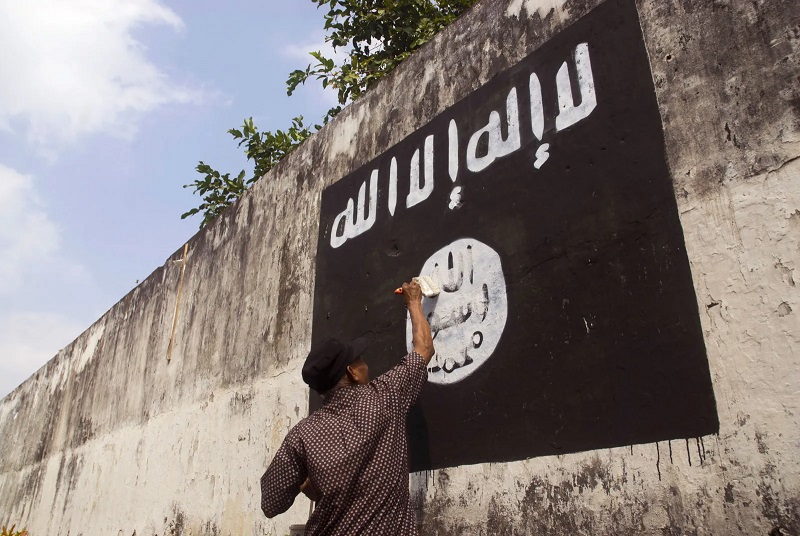By Elisa Orofino
A “proto-state”, a “socio-political movement, the ”beast“ – all names given to a single group that, at its height, seemed to embody the west’s worst nightmare.
Islamic State appeared to be a motivated, well-led insurgency group dedicated to building its own “caliphate” in conquered areas across the Middle East. Now, the recent violent death of its leader, Abu Ibrahim al-Qurayshi, in northern Syria, has left analysts wondering whether the group has largely been neutralised. But that’s doubtful, as IS has been able to change over the years to suit its circumstances.
The Islamic State of Iraq and Syria, aka ISIS, emerged as an al-Qaida splinter group in 1999 and achieved the peak of its international notoriety in 2014, following the conquest of the city of Mosul in northern Iraq.
Although its ideology is not especially innovative – grounded, as it is, in a mixture of the offshoot Islamic creeds of Salafism, Qutbism, Wahabism and Takfirism – IS embodies a significant evolution in jihadi terror organisations. It’s different to al-Qaida – and more ambitious – in several key ways. Osama bin Laden and his disciples never called for the establishment of a global caliphate. They were more focused on taking the fight against the western infidels.
IS dared to go much further, creating a “pseudo-state” with more than 30,000 fighters and a sophisticated authoritarian system of government. As militants joined the group from all over the world, IS expanded across northern Iraq and Syria. By doing this, it was able to seize control of considerable natural resources – principally oil – to give it financial independence.
Former IS leader Abu Bakr al-Baghdadi’s bold declaration of a “caliphate” on June 29 2014 was a spur for many to join the cause. But, as American journalist Graeme Wood noted, IS had a broad appeal to everyone from “Sunni Arab pragmatists to foreign soldiers of fortune”. This suggests the group wanted to appeal to a diverse membership, not all of whom were motivated by religion. It has been reported that copies of Islam for Dummies and The Koran for Dummies were circulated among the group’s foreign fighters to give them an idea of the ideology they were fighting for.
IS rhetoric on social justice and a sense of revenge against a corrupt and unjust western establishment were very appealing for many who decided to join the group. Through its sophisticated propaganda distributed on social media, the IS communication department continues to disseminate ad hoc messages and videos with Hollywood-style effects. These don’t only focus on violence, but also touch on the welfare and care IS insists it will provide to all members. The IS-affiliated Al Hayat Media Center generates media content aimed specifically at non-Arabic speakers – particularly younger audiences, who represent a core recruitment pool for the organisation.
Al-Qurayshi’s death – he killed himself and his wife and children during a raid by US troops in northern Syria – is unlikely to shift the loyalty of many members or lessen the appeal of the group. And he and his family will, for many, be seen as martyrs in an ongoing war.
Shape-shifting terror group
Since 2017, IS has lost 98% of its territories. It has accordingly shifted its strategy from becoming a quasi state to a decentralised ideology focused on encouraging solo attacks around the world. The loss of territory and the capture and killing of its leaders is unlikely to damage the group’s appeal or its emotional significance for those who have joined the cause and those who would still like to.
IS has been home for many second-generation Muslims and a safe place for disenfranchised individuals. IS has been able to able to fill the void in the lives of thousands of young people who dream of joining a greater cause and fighting against any form of oppression they have encountered in their apparently “comfortable” western lives.
So IS has evolved into a “post-territorial” group which represents a sort of wide resistance against the establishment – depicted as former colonial western powers. Touching on different social, economic, political and religious grievances, IS has managed to gather individuals from various backgrounds and unite them under the shahada flag (which proclaims a faith in Islam). It might have lost most of its territory and suffered the deaths of successive leaders but the ideological ground and the grievances the group rests upon remain undiminished. It is likely that the terror group will continue attracting supporters and followers for the foreseeable future.
Efforts to prevent this should focus on what the founder of the International Centre for the Study of Radicalisation (ICSR), Peter Neumann, refers to as “everything that happens before the bomb goes off”. This is the radicalisation process: when individuals are attracted to a certain set of ideas but have not yet engaged and acted upon them. More research should focus on the variety of non-violent but vocal extremist groups whose ideological assumptions appear similar to some terror groups but who do not espouse violence as a viable methodology.
Al-Qurayshi’s death may be forgotten over time, but the group he led still represents a considerable danger. While the actual territorial presence of Islamic State has been annihilated, for those people (and their children) who called the caliphate home, the “proto-state” exists in the massive diaspora who dreamed of what the caliphate could fulfil. The danger for the west is that the strength of IS doesn’t depend on its leader but on the emotional significance it has for its supporters. Until this is addressed there will always be a “beast” threatening the west.
Elisa Orofino is currently the Research Lead on Extremism and Counter-Terrorism at the Policing Institute for the Eastern Region (PIER) at Anglia Ruskin University. On Twitter @elisa_orofino.
This article is republished from The Conversation under a Creative Commons license. Read the original article.
